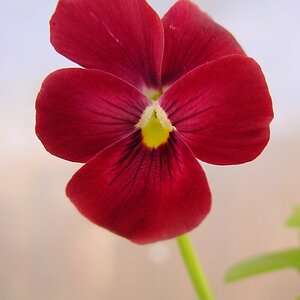I've been using one of my father's old cameras for awhile now, and I'm looking to buy my own and a few lenses. I'm primarily interested in macro(flora and small animals such as insects) and landscape photography. I'm looking for some suggestions as to what equipment to buy, as it's proving to be rather difficult differentiating between the specifications that are necessary or unnecessary. I've selected a few macro lenses that I would believe to fit my needs, being the 100mm and 105mm lenses from Canon and Nikon respectively. Although I've no clue as to the differences between the two 105mm/100mm from each, or what wide angle lens/camera body to get. All input and/or suggesting are greatly appreciated  Thanks in advance.
Thanks in advance.
Navigation
Install the app
How to install the app on iOS
Follow along with the video below to see how to install our site as a web app on your home screen.

Note: This feature currently requires accessing the site using the built-in Safari browser.
More options
You are using an out of date browser. It may not display this or other websites correctly.
You should upgrade or use an alternative browser.
You should upgrade or use an alternative browser.
Camera Equipment Clarification
- Thread starter Desmond86
- Start date
- Joined
- May 1, 2008
- Messages
- 25,422
- Reaction score
- 5,003
- Location
- UK - England
- Website
- www.deviantart.com
- Can others edit my Photos
- Photos OK to edit
In general either brand will work; most of the differences are going to be niggles and personal opinions more than anything else; and a lot of that is often whichever one people are most used to. Nikon shooters will like nikon; canon will like canon and so on.
Either brand can do what you want.
Now a few niggling thoughts
1) Canon has superior IS in their 100mm f2.8 IS L macro lens. It's newer but the IS is also a hybrid IS that aims to counter up/down left/right motion (as all IS/OS/VR does) but also counters back/forward motion which is a major issue in macro photography. It's currently the only lens on the market to do this. Thus its IS boon is better than most - the VR on the Nikon is good but its not "as" good.
2) It's generally agreed taht Nikon has some top level wide angle lenses that are outstandingly popular. I've even known canon shooters to mod the nikon lens to fit their camera bodies (not many though). This is a more niggling thing honestly as Canon has some great landscape lenses too. Chances are this is the kind of thing you can find in reviews, but which honestly might not sway you unles you're already experience and started to get much more particular in what you want (and who knows the Nikon options might not offer what you want by that stage either).
3) Macro - first I will say that there is nothing one brand can do that the other can't - nothing.
However Canon does make the only 1:1 through to 5:1 macro lens on the market at present. There ARE other ways to get up to 5 times life size (and some of them are better than the lens); but for most the Canon MPE 65mm macro is the way to go. It is one of THE hardest lenses to use out there; but its also a fantastic lens when it works. However when we are talking small an challenging we are talking springtails, crumbs - ergo REALLY tiny stuff here. Most are fine with what 1:1 can achieve and often practicality caps most people out at around 3:1 (and you can use extension tube/ macro close up filters/attachments/diopters to get that from a regular macro lens if you want).
I'm putting this in here to consider, you won't start with this lens, but its there as a consideration if these kinds of subject are what you are interested in.
4) It's generally agreed that Nikon has access to better sensors at present. Canon has good sensors and a few years back was king of sensors; but right now they are lagging behind. I wouldn't be too worried about this Canon still produces great shots and the "leader" of this area can change quickly. .
Either brand can do what you want.
Now a few niggling thoughts
1) Canon has superior IS in their 100mm f2.8 IS L macro lens. It's newer but the IS is also a hybrid IS that aims to counter up/down left/right motion (as all IS/OS/VR does) but also counters back/forward motion which is a major issue in macro photography. It's currently the only lens on the market to do this. Thus its IS boon is better than most - the VR on the Nikon is good but its not "as" good.
2) It's generally agreed taht Nikon has some top level wide angle lenses that are outstandingly popular. I've even known canon shooters to mod the nikon lens to fit their camera bodies (not many though). This is a more niggling thing honestly as Canon has some great landscape lenses too. Chances are this is the kind of thing you can find in reviews, but which honestly might not sway you unles you're already experience and started to get much more particular in what you want (and who knows the Nikon options might not offer what you want by that stage either).
3) Macro - first I will say that there is nothing one brand can do that the other can't - nothing.
However Canon does make the only 1:1 through to 5:1 macro lens on the market at present. There ARE other ways to get up to 5 times life size (and some of them are better than the lens); but for most the Canon MPE 65mm macro is the way to go. It is one of THE hardest lenses to use out there; but its also a fantastic lens when it works. However when we are talking small an challenging we are talking springtails, crumbs - ergo REALLY tiny stuff here. Most are fine with what 1:1 can achieve and often practicality caps most people out at around 3:1 (and you can use extension tube/ macro close up filters/attachments/diopters to get that from a regular macro lens if you want).
I'm putting this in here to consider, you won't start with this lens, but its there as a consideration if these kinds of subject are what you are interested in.
4) It's generally agreed that Nikon has access to better sensors at present. Canon has good sensors and a few years back was king of sensors; but right now they are lagging behind. I wouldn't be too worried about this Canon still produces great shots and the "leader" of this area can change quickly. .
- Joined
- Mar 14, 2012
- Messages
- 195
- Reaction score
- 83
- Location
- Colorado
- Can others edit my Photos
- Photos OK to edit
Yup, budget?
For the two lenses you mentioned, the 100mm and 105mm lengths are essentially the exact same lens (functionally), just different brands. Something else to consider...
Using Canon as an example (but mostly applies to Nikon too), there are several different "lengths" that can be used as macro lenses. For example, Canon has macro lenses in these lengths: 50mm, 60mm, 100mm, and 180mm. The bigger the number, the more "working distance" you have between you and the subject when it's magnified to its max. More working distance is often a good thing, and with things that get spooked or bite, it could be essential. However, the bigger numbers have a more constricted or narrow angle of view (side-to-side). Any of these four lenses can be used as "normal" lenses too. The one lens that @Overread mentioned above (65mm MPE) cannot be used for anything BUT macro.
From personal experience with all of these lenses, my favorite on a crop-sensor camera (more likely that you'd get) is around the 60mm range. But, that 100mm with IS from Canon is pretty sweet. I would not recommend the 65mm MPE, nor the 180mm as a first macro lens.
For landscape work, most people prefer a wide angle or short lens. (You *can* use a longer lens, but that's a different style of photography.) Most people enjoy a lens that is shorter than the 18mm kit lens. Personally, one of my old favorites was the 10-22mm (or 10-18mm). But any number range that's close to those numbers will likely do well.
As you get closer to a decision (and budget), the choices will become more clear.
For the two lenses you mentioned, the 100mm and 105mm lengths are essentially the exact same lens (functionally), just different brands. Something else to consider...
Using Canon as an example (but mostly applies to Nikon too), there are several different "lengths" that can be used as macro lenses. For example, Canon has macro lenses in these lengths: 50mm, 60mm, 100mm, and 180mm. The bigger the number, the more "working distance" you have between you and the subject when it's magnified to its max. More working distance is often a good thing, and with things that get spooked or bite, it could be essential. However, the bigger numbers have a more constricted or narrow angle of view (side-to-side). Any of these four lenses can be used as "normal" lenses too. The one lens that @Overread mentioned above (65mm MPE) cannot be used for anything BUT macro.
From personal experience with all of these lenses, my favorite on a crop-sensor camera (more likely that you'd get) is around the 60mm range. But, that 100mm with IS from Canon is pretty sweet. I would not recommend the 65mm MPE, nor the 180mm as a first macro lens.
For landscape work, most people prefer a wide angle or short lens. (You *can* use a longer lens, but that's a different style of photography.) Most people enjoy a lens that is shorter than the 18mm kit lens. Personally, one of my old favorites was the 10-22mm (or 10-18mm). But any number range that's close to those numbers will likely do well.
As you get closer to a decision (and budget), the choices will become more clear.
Sorry I'm responding a bit late, I've been rather busy this weekend. My budget's going to be no higher than the $3,000 mark, if possible. I also wanted to know if it would be a good idea to go with a mirrorless setup? Thanks for all the in-depth responses by the way  .
.
Last edited:
- Joined
- Mar 14, 2012
- Messages
- 195
- Reaction score
- 83
- Location
- Colorado
- Can others edit my Photos
- Photos OK to edit
Regarding budget, I've generally used a rule-of-thumb that for a main "system" camera, you'd spend about 3x the cost of the body to get into things seriously. That puts the cost of the body at $750 (or less). Some of us spend a whole lot more.
You can spend less by buying cheap lenses, but that kinda defeats the point of a system-based setup, and you'd be better off just using your smartphone. I'm exaggerating a bit, but maybe not by much.
If one is buying a mirrorless system for the weight and size reductions, then I think that buying a full-frame option is weird because a set of full frame lenses will define most of the bulk and weight of the system. Buying a travel lens or two and a crop-sized mirrorless setup definitely makes for a nice travel option.
Buying a "nice" macro lens seems to me to be pushing into that space a little bit. I wouldn't avoid mirrorless in any way, but I wouldn't connect weight/size to that lens option if that's where you're going. There are plenty of other reasons to go mirrorless including focus peaking (helpful in macro work) and exposure preview. However, you can get at least the exposure preview part on any DSLR using live view, and focus peaking on some DSLR's.
But landscape work definitely benefits from low noise and large pixels. I still prefer the good 'ol mirrored (and full-frame) types for that. Sony has the A7S but you just blew your budget going that way. But if your idea of landscape work includes backpacking 20 miles into the wilderness, then this discussion changes.
A "nice" macro lens can be found in the US$500 to $900 based on the mount and focal length (and working distance) that you prefer. Landscape lenses don't need to be f/2.8 monsters because most landscape work is going to be using a smaller aperture (like f/8) anyways. A manual-focus, wide-angle lens can be had for a few hundred up to maybe $750. That easily leaves a couple grand available to get a full frame body, if that's up your alley. There are many crop-sensor bodies that are excellent and fit within your price range.
Plus, going this route leaves you money for buying that most important accessory: a decent tripod.
Another benefit for staying with one of the mainstream manufacturers is lighting options. With macro work, you might want to have a ring-light option. That's easier with the bigger names.
And don't forget to get a general-purpose, walk-around zoom and make the camera more useful in more situations.
I stay away from citing exact prices because there are so many options between new, used and refurbished gear, plus you have to get into the brand debate.
Also, macro photography tends to be a "technical" type of photography and there are non-traditional and technical options available. You could use extension tubes or consider using a bellows system and an enlarger lens that can be much cheaper than a dedicated macro lens. But that's definitely not something for everyone. If you're curious, ask.
You can spend less by buying cheap lenses, but that kinda defeats the point of a system-based setup, and you'd be better off just using your smartphone. I'm exaggerating a bit, but maybe not by much.
If one is buying a mirrorless system for the weight and size reductions, then I think that buying a full-frame option is weird because a set of full frame lenses will define most of the bulk and weight of the system. Buying a travel lens or two and a crop-sized mirrorless setup definitely makes for a nice travel option.
Buying a "nice" macro lens seems to me to be pushing into that space a little bit. I wouldn't avoid mirrorless in any way, but I wouldn't connect weight/size to that lens option if that's where you're going. There are plenty of other reasons to go mirrorless including focus peaking (helpful in macro work) and exposure preview. However, you can get at least the exposure preview part on any DSLR using live view, and focus peaking on some DSLR's.
But landscape work definitely benefits from low noise and large pixels. I still prefer the good 'ol mirrored (and full-frame) types for that. Sony has the A7S but you just blew your budget going that way. But if your idea of landscape work includes backpacking 20 miles into the wilderness, then this discussion changes.
A "nice" macro lens can be found in the US$500 to $900 based on the mount and focal length (and working distance) that you prefer. Landscape lenses don't need to be f/2.8 monsters because most landscape work is going to be using a smaller aperture (like f/8) anyways. A manual-focus, wide-angle lens can be had for a few hundred up to maybe $750. That easily leaves a couple grand available to get a full frame body, if that's up your alley. There are many crop-sensor bodies that are excellent and fit within your price range.
Plus, going this route leaves you money for buying that most important accessory: a decent tripod.
Another benefit for staying with one of the mainstream manufacturers is lighting options. With macro work, you might want to have a ring-light option. That's easier with the bigger names.
And don't forget to get a general-purpose, walk-around zoom and make the camera more useful in more situations.
I stay away from citing exact prices because there are so many options between new, used and refurbished gear, plus you have to get into the brand debate.
Also, macro photography tends to be a "technical" type of photography and there are non-traditional and technical options available. You could use extension tubes or consider using a bellows system and an enlarger lens that can be much cheaper than a dedicated macro lens. But that's definitely not something for everyone. If you're curious, ask.
- Joined
- Mar 14, 2012
- Messages
- 195
- Reaction score
- 83
- Location
- Colorado
- Can others edit my Photos
- Photos OK to edit
Once a particular setup starts to sound attractive, you'll be able to get a lot more specific recommendations. So, reply back with "hmm, I'm liking the sound of a 14mm prime lens on a body by ..."
I really don't like the sound of losing the viewfinder on mirrorless, and weight wasn't so much of a concern as image quality. So from what you've said I'll probably stick with a DSLR. I'm definitely leaning towards Canon at this point, since I have no experience with Nikon whatsoever. I am still kind of hesitant to make a selection here though, as I don't want to be choosing the brand that would yield a lower quality image due to a poorer sensor(referring to the end of Overread's response). I know this may really dependent on a body to body basis though. As for lenses, I want to say a 100mm sounds most appealing as it sounds like the 60mm may not be as practical when the subject can be spooked. For a wide lens either a 10-18mm or 10-22mm(is it really worth $320 more for 4mm more?). I am also curious if there is any way you could explain to me what the difference between a body around the $750 mark and one that may be a bit higher, just so I can judge the worth in moving up a body tier? (70D vs 80D or EOS Rebel Ts for example)
Derrel
Mr. Rain Cloud
- Joined
- Jul 23, 2009
- Messages
- 48,225
- Reaction score
- 18,941
- Location
- USA
- Website
- www.pbase.com
- Can others edit my Photos
- Photos OK to edit
Do check out the dynamic range stats on Canon vs Nikon...check those out on DxO Mark's website. As to price of camera bodies: there are newer-generation models, and new old stock. One can buy a brand-new Canon 70D, a used 70D, or a used 80D or a brand new 80D. Many cameras are classified by up-sell closeness to lower models, so sales folk can have features to "sell with". You can buy the this year's model $899 camera, or last year's $1199 model...both for about the same price.
Buying one generation behind current can sometimes save a lot of money!
As far as I know, Nikon has Macro lenses in the 40mm, 60mm, 85mm, and 105mm lengths; the 40 and the 85 DX are for their DX-model cameras.
Buying one generation behind current can sometimes save a lot of money!
As far as I know, Nikon has Macro lenses in the 40mm, 60mm, 85mm, and 105mm lengths; the 40 and the 85 DX are for their DX-model cameras.
beagle100
Been spending a lot of time on here!
- Joined
- Mar 31, 2015
- Messages
- 2,073
- Reaction score
- 546
- Can others edit my Photos
- Photos OK to edit
I've been using one of my father's old cameras for awhile now, and I'm looking to buy my own and a few lenses. I'm primarily interested in macro(flora and small animals such as insects) and landscape photography. I'm looking for some suggestions as to what equipment to buy, as it's proving to be rather difficult differentiating between the specifications that are necessary or unnecessary. I've selected a few macro lenses that I would believe to fit my needs, being the 100mm and 105mm lenses from Canon and Nikon respectively. Although I've no clue as to the differences between the two 105mm/100mm from each, or what wide angle lens/camera body to get. All input and/or suggesting are greatly appreciatedThanks in advance.
I agree, Canon will give you better 'IQ' image quality, a larger selection of lenses, faster AF, (especially with 1:1 macro) etc. but check out all the models including the new mirrorless cameras
Last edited:
goodguy
Been spending a lot of time on here!
- Joined
- Dec 5, 2012
- Messages
- 5,555
- Reaction score
- 1,121
- Location
- Toronto Canada
- Can others edit my Photos
- Photos OK to edit
Yes that's a big different, D7100 has the better sensor!Is the difference between the 70D's and the D7100's portrait and landscape score a significant one? Portrait-70D(22.5bits) D7100(24.2bits) Landscape-70D(11.6Evs) D7100(13.7Evs)
Similar threads
- Replies
- 3
- Views
- 372
- Replies
- 20
- Views
- 2K

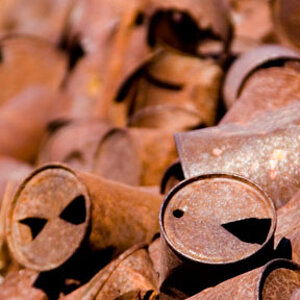
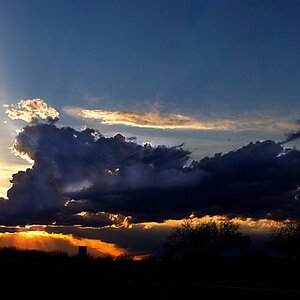
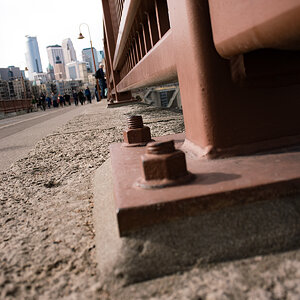
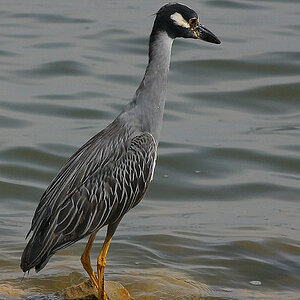
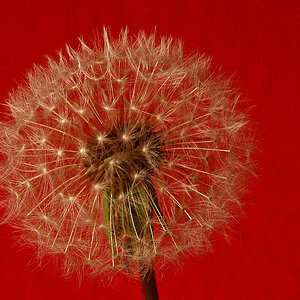
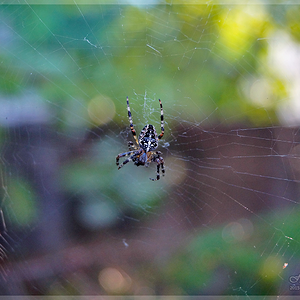

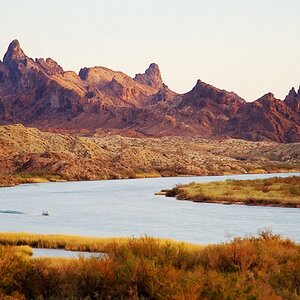
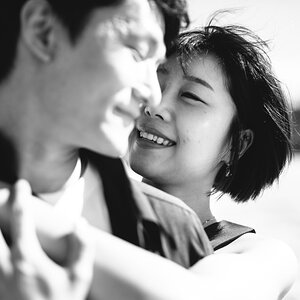
![[No title]](/data/xfmg/thumbnail/36/36600-689bc868e20f53581a083c9054ee0e47.jpg?1619737641)
![[No title]](/data/xfmg/thumbnail/34/34343-b06994e286a2089b404358d95c37eaf0.jpg?1619736378)
